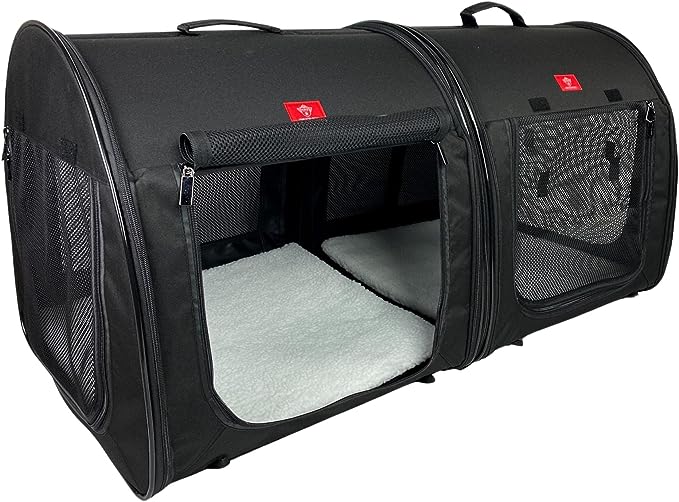Archives
- September 2020
- August 2020
- July 2020
- June 2020
- May 2020
- April 2020
- March 2020
- February 2020
- January 2020
- December 2019
- November 2019
- October 2019
- September 2019
- August 2019
- July 2019
- June 2019
- May 2019
- April 2019
- March 2019
- January 2019
- December 2018
- November 2018
- October 2018
- September 2018
- August 2018
- July 2018
- June 2018
- May 2018
- April 2018
- March 2018
- February 2018
- January 2018
- December 2017
- November 2017
- October 2017
- September 2017
- August 2017
- July 2017
- June 2017
- May 2017
- April 2017
- March 2017
- February 2017
- January 2017
- December 2016
- November 2016
- October 2016
- September 2016
- August 2016
- July 2016
- June 2016
- May 2016
- April 2016
- March 2016
- February 2016
- January 2016
- December 2015
- November 2015
- October 2015
- September 2015
- August 2015
- July 2015
- June 2015
- May 2015
- April 2015
- March 2015
- February 2015
- January 2015
- December 2014
- November 2014
- October 2014
- September 2014
- August 2014
- July 2014
- June 2014
- May 2014
- April 2014
- March 2014
- February 2014
- January 2014
- December 2013
- November 2013
- October 2013
- September 2013
- August 2013
- July 2013
- June 2013
- May 2013
- April 2013
- March 2013
- February 2013
- January 2013
- December 2012
- November 2012
- October 2012
- September 2012
- August 2012
- July 2012
- May 2012
- April 2012
- March 2012
- February 2012
- January 2012
- December 2011
- November 2011
- October 2011
- September 2011
- August 2011
- July 2011
- May 2011
- April 2011
- March 2011
- January 2011
- December 2010
- November 2010
- October 2010
- September 2010
- August 2010
- July 2010
- June 2010
- May 2010
- April 2010
- March 2010
- February 2010
- January 2010
- November 2009
- October 2009
- September 2009
- August 2009
- July 2009
- June 2009
- December 2008
- November 2008
- September 2008
- June 2008
- August 2006
- September 2005
- August 2005
-
Prevention
Comments Off on PreventionOf course, the time to take preventive measures is BEFORE your cat is missing. But once you are reunited with your cat, or if you have other cats, or ever plan to get another cat, you will want to do everything possible to make sure your cat will be returned to you, should he or she ever get lost in the future.
Microchips
A microchip is a great way to minimize the possibility that your cat will be lost in the animal shelter system, as shelter and rescue workers scan for these chips when a new cat is brought in. Also, many people finding a cat will bring the cat to a vet or shelter to be scanned for a chip.
Many cats are chipped prior to adoption, but you can also have your cat microchipped at your vet’s office. Be sure your cat’s chip is registered and kept up to date. Sometimes, the shelter will register the chip for you. You can check this online. Make sure that the phone number, email address, etc. that you gave the chip company initially is still current, so you can be reached when your cat is found.
Remember that the information on the microchip is just a bar code. Your actual information, i.e. address, email, and phone number, is filed with the company who sold your cat’s chip (such as Home Again). Because of this, even if your cat goes missing before you have registered the chip, or if your contact information needs to be updated, you can still do this, as long as you have the original paperwork with your cat’s chip number on it. The microchip number may also be on file at your vet’s or at the shelter where you adopted your cat.

Collars
Not all cats will tolerate a collar. But if your cat will, make that collar count!
Be sure to write your phone number on the collar so that if anyone finds your cat, they can contact you. A lot of cat collars are difficult to write on. But you can get a personalized breakaway cat collar embroidered with your phone number for under $10 on Amazon or http://www.snazzyfido.com/products/personalised-embroidered-collar-made-from-organic-bamboo-webbing
If you find a cat’s collar on the ground and it has a phone number on it, please call that number: Knowing where the collar was found may help the family to be reunited with their cat, since it will be an important clue about where the cat has been.

Photos and Proof of Ownership
Be sure to keep current photos of your cats. You will need good photos for websites, posters, and flyers. Be sure the photos are crisp, clear, and show your cat’s markings well. It’s good to get the cat’s tail in the picture if you can, as tail size, shape, and color are important identifying details.
If somebody finds your cat, they may ask for proof that you are really the cat’s person. This is because there are unscrupulous (and very convincing) people who claim “found” cats, and then turn around and sell them, hoard them, or worse. The person who has your cat doesn’t know you, so please don’t take offense when they ask for proof. They are trying to protect you AND your cat. (Because what if they didn’t check for proof of ownership and gave your cat to some liar who stopped by an hour before you did?)
So make sure to take some selfies of you and your cat together, and be aware of where your cat’s adoption papers are kept. You can also bring some of your flyers as proof, if you have nothing else. Flyers will have your phone number or email so they can verify you as the “owner”. Having some sort of proof is important, since, unlike dogs, cats may not make a convincing leap into our arms, proving they are ours. They may well be too frightened to respond right away, and may even ignore us or hide.
GPS Devices
As of now, there are GPS devices for dogs, but those are too large for most cats. If anyone hears of a GPS device that is appropriate for cats, please let us know at cat.finders@comcast.net. Some people like Whistle, which shows your cat’s location on your smartphone. There is now a homing device that is nicely sized for cats and fits onto a collar for $99. I don’t know how well it works, but it seems like it might be worth a try if your cat keeps disappearing. See it here: http://www.hammacher.com/Product/78313?promo=Category-NewArrivals&catid=60
Some people also like the Whistle Tracker: Whistle GO Explore GPS Pet Tracker & Activity Monitor
New technology is being developed all the time. There are many GPS systems now that could work for your cat. I suggest you use Google, and read reviews before making your choice.Screens

One of the most common ways indoor-only cats go missing is because they push out a window screen or tear a hole in it. Outdoor-access cats will also sometimes destroy screens if they are not allowed out. Fortunately, cat-proof screen material is available online and at stores like Home Depot. The time to put up the cat-proof screens is BEFORE your cat gets out and gets lost. Here are some examples . . . Cat Finders is not endorsing any specific product, and you may be able to find some at a lower cost at your favorite hardware store. https://www.amazon.com/s?k=cat+proof+screens&hvadid=77790566991479&hvbmt=be&hvdev=c&hvqmt=e&tag=mh0b-20&ref=pd_sl_4v22ysvi6n_e
SPECIAL SITUATIONS
There are a few situations that are especially risky for your cat to go missing. Over and over, we see cats go missing at some point during or after a family moves to a new home, or while traveling, or when your cat has just been newly adopted by you. Please see below for a discussion of each scenario.
Moving
A common time for cats to go missing is during a move. The cat either gets spooked by the moving trucks or all the disorder of a household being packed up, furniture being moved, etc., or by the car ride to the new home; or manages to escape from the new home before they know it’s really Home.
It is crucial to take extra preventative steps during all stages of your move. Be sure to have your cat in a safe carrier she can’t escape from. Talk reassuringly to your cat during all phases of his or her trip to the new home. Once in the new home, it is a good idea to keep your cat in a quiet room, inside the carrier, with the door closed, while furniture is being moved into the home. Once the furniture movers are gone, and all is quiet, you can let the cat out of the carrier. Gradually, let the cat explore the house.
It is not advised to let your cat go outside right away, even if he or she was used to going outside at your former home. First, let the cat have a few days to get used to the new home, and to look out the windows to get some idea of the outdoor area. If your cat insists on going out after a few days, go with him or her (with your cat in a harness and on a leash perhaps) and explore the yard together. Bring some treats with you, in case your kitty begins to wander off; treats should bring him or her back to you. If your cat is on a leash, do not let go! Your cat could run up a tree or into underbrush and the leash could end up being a hazard to your cat.
Please be aware that if your cat was used to going out at his former home, he may miss his old territory, which was familiar to him, and felt safe. He may try to get back there, especially if it is less than about 10 or 15 miles away. This may happen right away, or after a few months. So you want to keep a pretty close eye on your cat during the early months of the move. If you can put an 8-foot fence around your yard, that might help keep your cat home and safe.
Traveling with Your Cat
It is extremely risky to let your cat outside at a rest stop, even with a halter and leash. Sometimes people feel that the cat needs a little exercise or to relieve him/herself. All it takes for your cat to get spooked and wiggle out of the harness is a big truck pulling in, or an air brake, horn, child screaming or any other unfamiliar noise. Many cats who get lost at a rest stop are never recovered. So, instead of letting your cat outside, line their carrier with an absorbent pad (like a Wee Wee pad) and bring a few extras along. Change the pad with all the doors and windows of the car closed, and your cat on a leash INSIDE the car so the cat doesn’t hide under the seats and then sneak out when you exit the car.
You can even have a litter box in the car, either in a cardboard box, or in a double carrier, as shown above, using one side for the cat, and the other for the litter box.
If you are staying in a motel or camping, do not let your cat outside. Even if your cat always comes whenyou call at home in your yard, that may not be the case in a strange place. You do not want to lose your cat in the forest, and then have to go back home without having found the cat!Sometimes people who see internet videos of people hiking with their cats think it would be a cool idea. Cat Finders strongly recommends against doing this. Sure, take your cat for a walk in the woods by your house if it’s an outdoor-access cat. But in a faraway location? That is asking for trouble. Cats are not dogs. They get spooked and frightened so much more easily than even a skittish dog & their impulse is to run and hide. They will get out of any double leash situation, especially when spooked, because they are made of river water and are at least part snake. And if they do get away into the wilderness, that may be the last time you ever see your cat. Is it worth it?
Sometimes, leaving your cat at home with a trusted pet sitter is the best way to go. Yes, pet sitters sometimes get conned or tricked and the cat gets out, but at least in that situation, the cat is close to your house and has a much better chance of being recovered than if he or she gets out at a campsite two hundred miles from home, where you are only staying for a week.
Newly Adopted Cat
When you adopt a cat, the cat may be terrified. The cat doesn’t know you, doesn’t know where you’re taking them, and is often waiting for the first chance to bolt. With that in mind, Cat Finders suggests not using carriers made of cardboard, not even the free ones that shelters often give you to bring the cat home in (unless it is a small kitten). Bring your own sturdy cat carrier with you before you even choose your new cat. A frightened cat can enlarge the air holes in those cardboard carriers and get his face through–once he does that, he’s out.Once home, you don’t want to let the cat go outside until he or she has been an indoor cat for at least three days and nights, minimum, and longer is better. My mother used to say that you should put butter on a cat’s nose when you move to a new home; once the cat licks it off, that is, once the cat EATS in the new home, he knows it’s home. There is some truth in that. But I would wait at least a few days or weeks until the cat begins to bond with you, begins to establish a routine, chooses some favorite spots, and begins to see your home as his or her territory. Ideally, you would keep the cat inside for several weeks, but if you adopt a cat who loves to go outside (as I did) and who was raising hell in the shelter the entire time he was there, you might try taking him out for short amounts of time in your securely fenced yard, or on a harness AND collar and leash. But this is risky! Make sure you have a bond with the cat before you do that. And a pocket full of treats wouldn’t hurt either.*******
cat.finders@comcast.net
www.catfinders.org© All content copyrighted to Cat Finders

